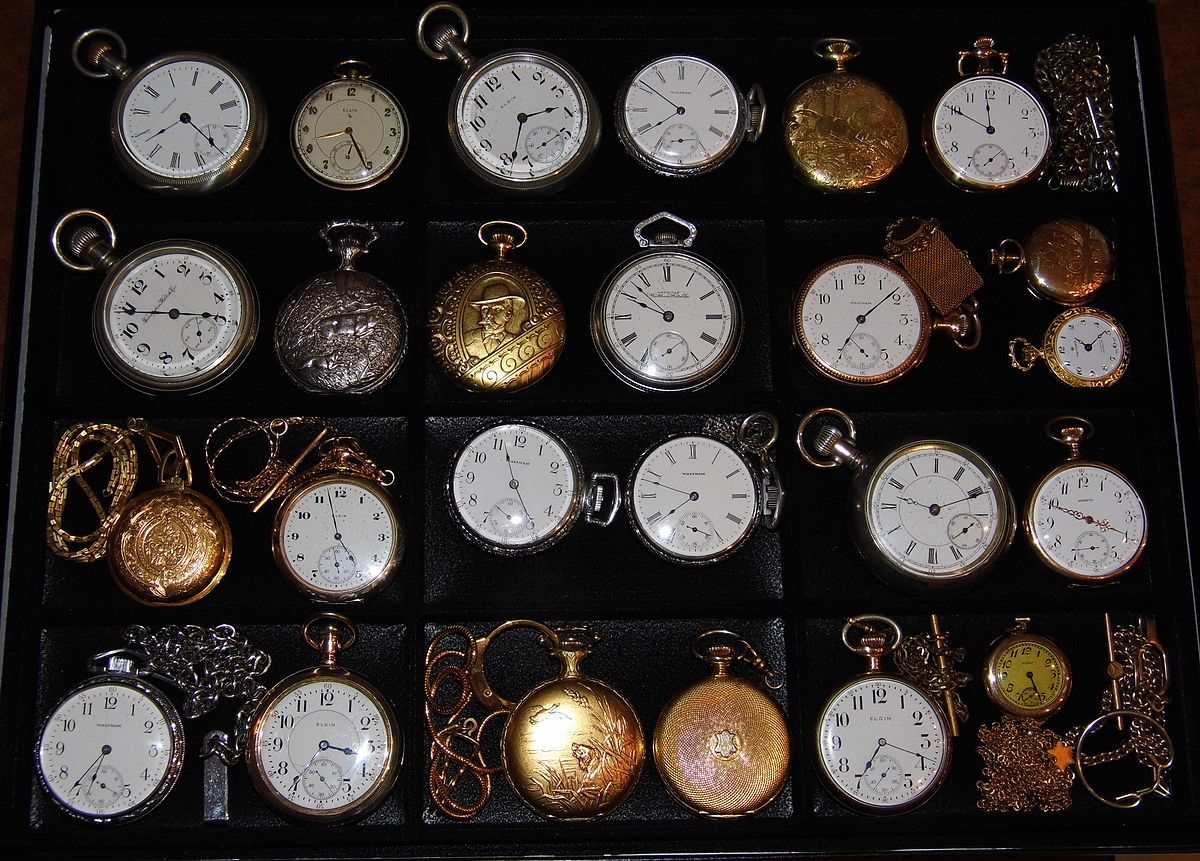How to Navigate the Hidden World of Vintage Watches…

This page contains ebay affiliate links. I may earn a commission for qualified purchases at no additional cost to you. These links are marked (AD).
Vintage watches ↗ (AD) are more than just timepieces. They are pieces of history, art and craftsmanship that tell a story of their own. Whether you are a seasoned collector or a curious beginner, there is a whole world of vintage watches waiting for you to explore.
But how do you navigate this hidden world? How do you find the best deals, avoid the pitfalls and discover the gems? In this blog post, we will share some tips and tricks to help you on your journey of vintage watch hunting.
What are vintage watches?
There is no definitive answer to what constitutes a vintage watch, but generally speaking, any watch that is older than 20 years can be considered vintage. Some collectors may have stricter criteria, such as only watches that are pre-quartz (before 1970) or pre-World War II.
Vintage watches come in all shapes and sizes, from dress watches ↗ (AD) to sports watches ↗ (AD), from chronographs ↗ (AD) to divers ↗ (AD), from pocket watches ↗ (AD) to wristwatches ↗ (AD). They also come from different brands, countries and eras, each with their own style and history.
Some of the most popular and sought-after vintage watch brands include Rolex ↗ (AD), Omega ↗ (AD), Patek Philippe, Audemars Piguet ↗ (AD), Heuer, Breitling ↗ (AD), Longines ↗ (AD), Jaeger-LeCoultre ↗ (AD) and Zenith ↗ (AD). However, there are also many lesser-known or obscure brands that offer great value and quality, such as Universal Genève, Eberhard & Co., Movado ↗ (AD), Buren ↗ (AD) and Cortebert ↗ (AD).
Why buy vintage watches?
There are many reasons why people buy vintage watches. Some of them are:
- Aesthetics: Vintage watches have a unique charm and character that modern watches often lack. They have patina, wear and tear, and signs of age that give them personality and history. They also have distinctive designs and features that reflect the trends and tastes of their time.
- Quality: Vintage watches were made with craftsmanship and attention to detail that is hard to find today. They were built to last and withstand the test of time. Many vintage watches still function perfectly after decades or even centuries of use.
- Value: Vintage watches can be a great investment, as they often appreciate in value over time. Some vintage watches have become very rare and collectible, fetching astronomical prices at auctions or private sales. Even if you are not looking to make a profit, vintage watches can offer great value for money compared to modern equivalents.
- Passion: Vintage watches are more than just objects. They are stories, memories and emotions. They connect you with the past and with other people who share your passion. They can also inspire you to learn more about the history, culture and technology behind them.
How to buy vintage watches?
Buying vintage watches can be a rewarding but challenging experience. There are many factors to consider before making a purchase, such as:
- Condition: The condition of a vintage watch is one of the most important aspects to look at. It can affect the functionality, appearance and value of the watch. You should check the dial, case, crystal, hands, crown, movement and strap for any signs of damage, corrosion, fading, cracking or alteration. You should also check if the watch is working properly and keeping accurate time.
- Authenticity: The authenticity of a vintage watch is another crucial factor to verify. There are many fakes, replicas and frankenwatches (watches made from parts of different models or brands) on the market that can deceive unsuspecting buyers. You should do your research on the specific model you are interested in and look for any red flags or inconsistencies that may indicate a fake. You should also ask for any documentation or provenance that can prove the origin and history of the watch.
- Price: The price of a vintage watch can vary widely depending on the brand, model, condition, rarity and demand. You should compare prices from different sources, such as online platforms (e.g., Chrono24), dealers (e.g., Vintage Watch Specialist), auctions (e.g., Sotheby’s) or private sellers (e.g., eBay). You should also factor in any additional costs, such as shipping, taxes or customs fees.
- Trust: The trustworthiness of the seller is another key factor to consider when buying a vintage watch. You should look for reputable and reliable sellers who have positive feedbacks, reviews or testimonials from previous customers. You should also communicate with them clearly and ask any questions you may have before making a deal. You should also use secure payment methods and avoid any scams or frauds.
What are some ancillary items for vintage watches?
Besides the watch itself, there are some ancillary items that can enhance your vintage watch experience. Some of them are:
- Watch tools: Watch tools ↗ (AD) are useful for maintaining, repairing or modifying your vintage watch. They include screwdrivers, tweezers, case openers, spring bar tools, magnifiers and more. You should use them carefully and with caution, as you may damage your watch if you are not skilled or experienced enough.
- Watch straps: Watch straps ↗ (AD) are accessories that can change the look and feel of your vintage watch. They come in different materials, colours, patterns and styles, such as leather, metal, nylon, rubber or canvas. You should choose a strap that matches the size, style and era of your watch, as well as your personal preference and comfort.
- Watch boxes: Watch boxes ↗ (AD) are containers that can store and protect your vintage watch. They can be made of wood, leather, metal or plastic, and have different compartments, cushions and locks. You should choose a box that fits your watch and offers adequate protection from dust, moisture and shocks.
- Watch books: Watch books ↗ (AD) are sources of information and inspiration for your vintage watch. They can cover various topics, such as history, design, technology, culture and collecting. They can also feature beautiful photographs, illustrations and stories of vintage watches. Some examples of watch books are The Watch Book by Gisbert L. Brunner ↗ (AD), The Vintage Rolex Field Guide by Morningtundra ↗ (AD) and A Man and His Watch by Matt Hranek ↗ (AD).
Disclaimer
The information in this blog post is for general guidance only and does not constitute professional advice. You should always do your own research and consult with experts before buying or selling any vintage watch. We are not responsible for any loss or damage that may arise from your use of or reliance on this information.

